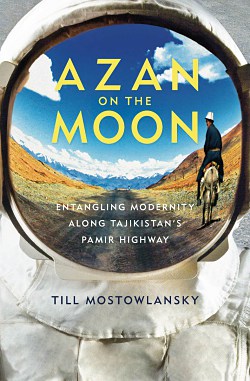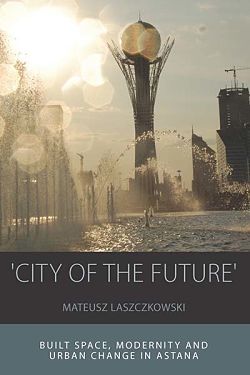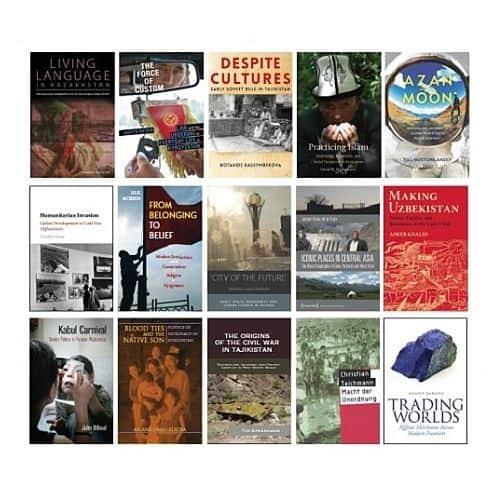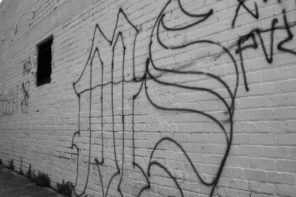This post belongs into a series of posts on the workshop “The Future of Central Asian Studies” organized by Prof. Dr. Judith Beyer and Prof. Dr. Madeleine Reeves at the University of Konstanz in September 2017.
Three new ethnographies on Central Asia analyze how people in various parts of the region engage with public spaces and infrastructures ranging from highways, capitals, dams, pastural lands and religious sites.
The studies describe complex processes of identification and open new terrains for thinking about the making of place, space and material surroundings.
The authors look at the aspirations of Central Asians to live modern, global, meaningful, good and moral lives, even in the context of larger discourses and experiences of economic, religious and political crises and disorientation. In addition to providing accounts that challenge essentialist representations of the region, they also provide nuanced individual accounts of ordinary people’s lives and capture insights into their self-representation.


Similarly, Jeanne Feaux de la Croix in her Iconic Places in Central Asia: The Moral Geography of Dams, Pastures and Holy Sites investigates if and how people in the Toktogul region in Kyrgyzstan relate to dams, pastures or Islamic holy sites and what these places can reveal about the “competing and shifting regimes of worth and moral values in contemporary Kyrgzystan” (p. 24). At the core of her analysis is the question of what does it mean to lead a good life in the context of economic, political insecurity and a general “crisis of meaning and often exhausting struggle to secure a livelihood” (de la Croix, p. 25). De la Croix argues that, among other things, the narratives of beauty, health, wealth, tradition, purity and Kyrgyzness provide important sources for dignified, cheerful and moral living in the context of material and political insecurity that lead people to make “hard choices” regarding their livelihoods (p. 294). She explores the social and moral construction of different sites and how those are constituted to empower and provide meaning to different groups. The moral value of these places is often ignored by economists or development workers, yet, the study suggests, researching the moral economy of places provide important insights into local understanding of “good life”, work and community in Kyrgyzstan.
Place-making, then, in all three studies is not only a physical or social practice, e.g. visiting mazaars in Kyrgyzstan, or celebrating the “capital day” of Astana. It is also a normative dialogue about how “civilized,” “modern,” “moral” and/or “good” life is imagined. As Laszczkowski writes, “[s]elf-making and place-making were in that sense inextricably related” (Laszczkowski, p. 81). These discourses, however, can reveal complexities behind discourses. Thus, while Astana urbanites strive to be seen as civilized and modern, they stigmatize rural residents and, more importantly, rely upon rural networks and social economies for the production of modern urbanity.
While the books discuss everyday life outside of obvious political arenas and, except for Astana, most are remote from the institutions of the government, they are not apolitical and reveal a great deal about individuals’ relation and expectation from the state. This is because the state infrastructures presented in the books (a capital city, a dam, a highway) are built by the state. The various ways in which ordinary people discuss these projects provides provide insights on how they judge the state’s responsibilities towards its citizens and the nation. As de la Croix, referring to Mitchell, suggests, states do not build dams simply to provide power, building dams is also a process via which nation-states are built (de la Croix, p. 105). In all three accounts of livelihoods around infrastructural developments, past or present, residents associate infrastructures with state’s welfare, and in cases where those are/were functioning and beneficial, such projects provide them with a sense of pride and hope. In the case of Astana, young people move to the city because it allows them to feel “properly human” and “to develop as persons” (p. 45).
Cement, then, – whether in dam, buildings or roads – is not only a physical material, but also represents a symbol of modernity and stability, creating a metaphorical link between individual and national destinies.
This process is not straightforward, neither linear. Skepticism towards the state and one’s future, Laszczkowski shows, can turn into optimism in case one experiences real material improvement. The author provides an example of a couple, who was at first very skeptical about Astana, but later changed its views once it received a social support apartment.
While the three authors restate what is now a truism, namely that identity construction is a complex process – they offer rich ethnographies about its mundane mechanisms. Mostowlansky portrays life in the Pamir, despite its geographic remoteness, as perpetuated with discourses of modernity so that people living there perceive themselves to be as modern as the Swiss, or at least, more modern than the rest of “central” Tajikistan or Afghanistan. He suggests, that “modernity and marginality are not a priori opposite sides of a dichotomy” (Mostowlansky, p. 148). For Laszczkowski, modernity is a “collective dreamworld” that transcends the ‘now’ to offer a future (Laszczkowski, p. 178). In the case of Astana, it is both a material and a normative project that is not only built, but narrated and performed (Laszczkowski, p. 81). Place-making is a disorderly process and should be seen as a political, socio-economic and cultural activity (Laszczkowski, p. 131). In case of Kyrgyzstan, De la Croix proposes that places of nature, religion and infrastructure become important because those who do not understand themselves as winners of modernity, need a “good” and “moral” life also despite modernity and despite the state. In the context of post-Soviet disbelief, De la Croix also reminds us that these alternative place-making practices also provide a source of happiness.
References:
Till Mostowlansky, Azan on the Moon: Entangling Modernity along Tajikistan’s Pamir Highway, The University of Pittsburgh Press, 2017.
Mateusz Laszczkowski, City of the Future. Built Space, Modernity and Urban Change in Astana, Berghahn Books, 2016.
Jeanne Feaux de la Croix, Iconic Places in Central Asia: The Moral Geography of Dams, Pastures and Holy Sites, Transcript 2016
Further reading at Allegra:
Judith Beyer and Madeleine Reeves: After the Eulogy? The Future of Central Asian Studies in the Accelerated Academy
Eva-Marie Dubuisson: Reflections on “The Future of Central Asian Studies”









